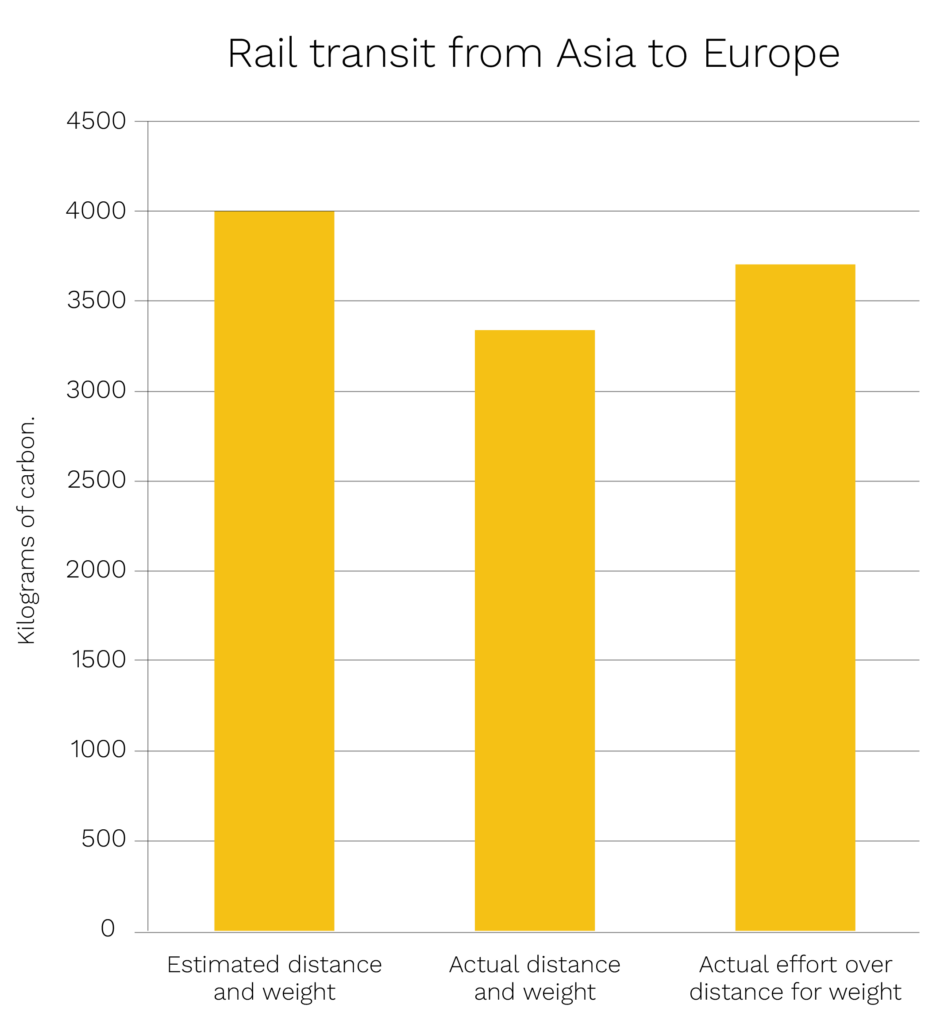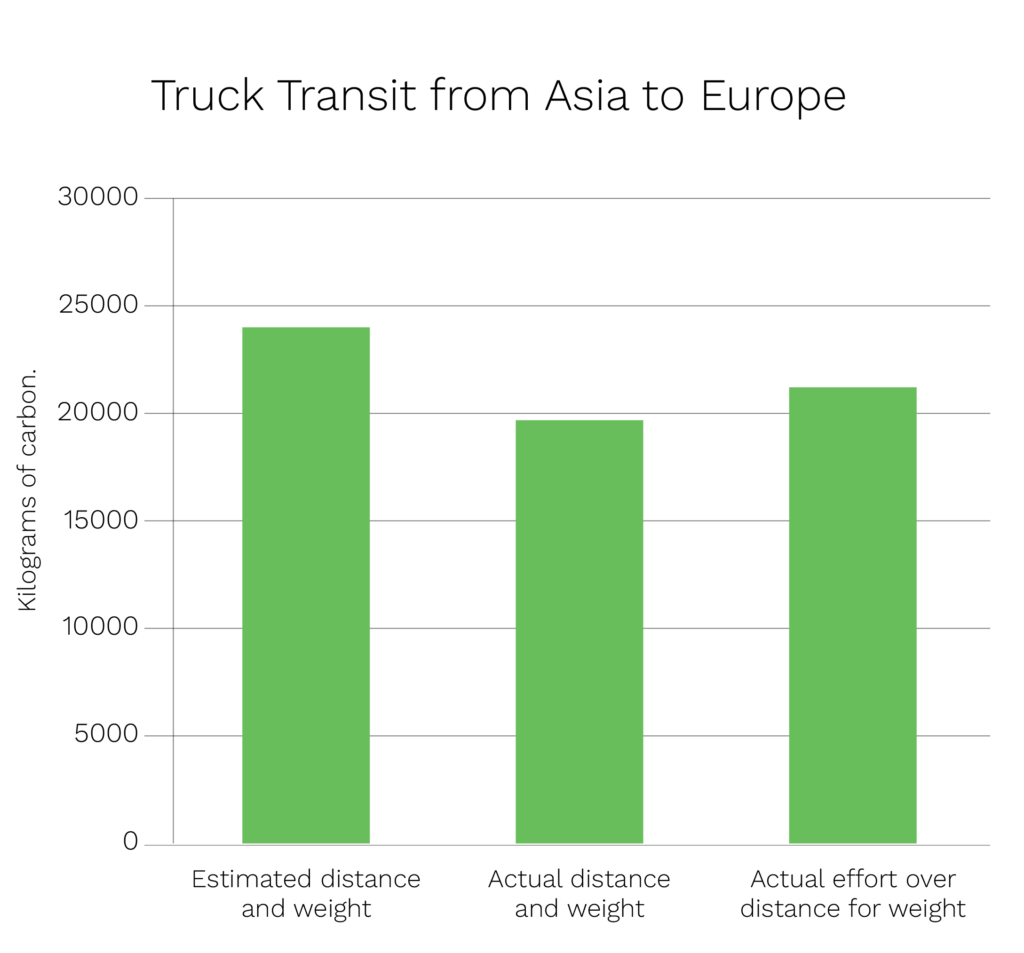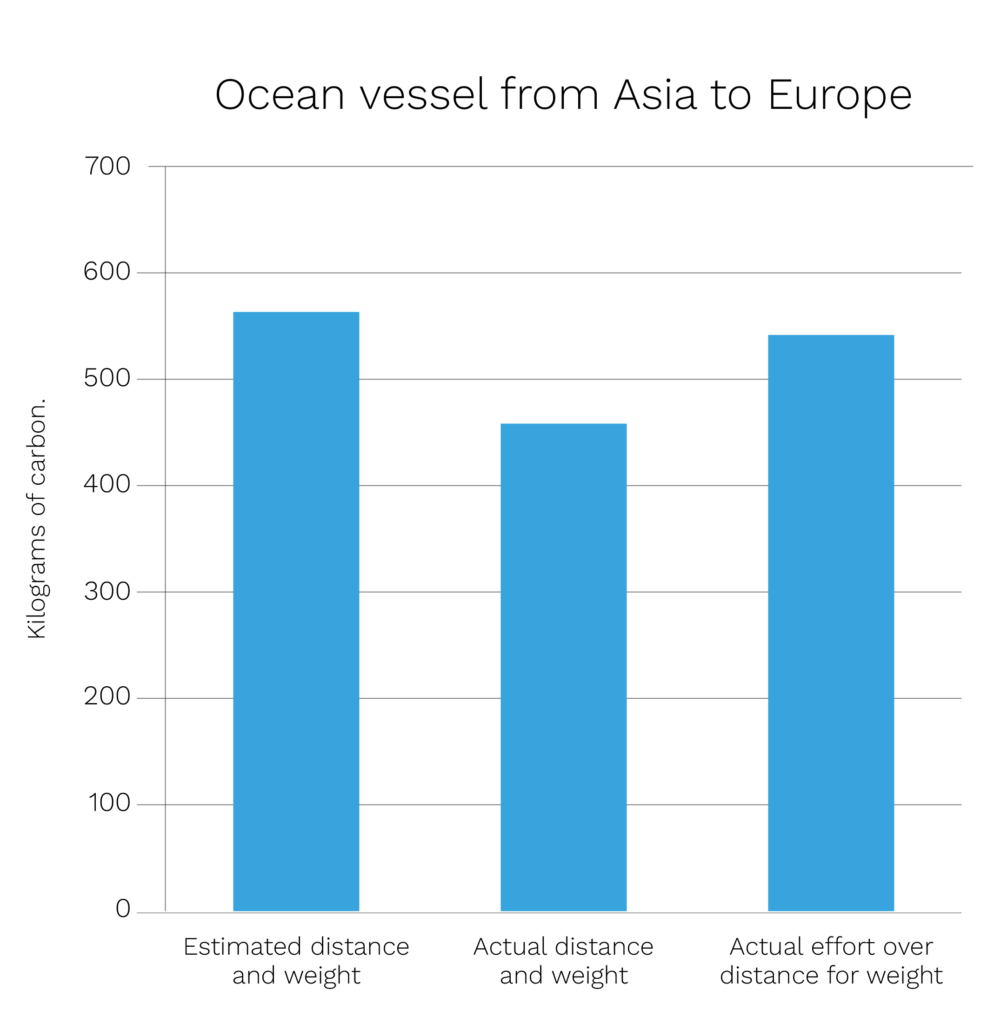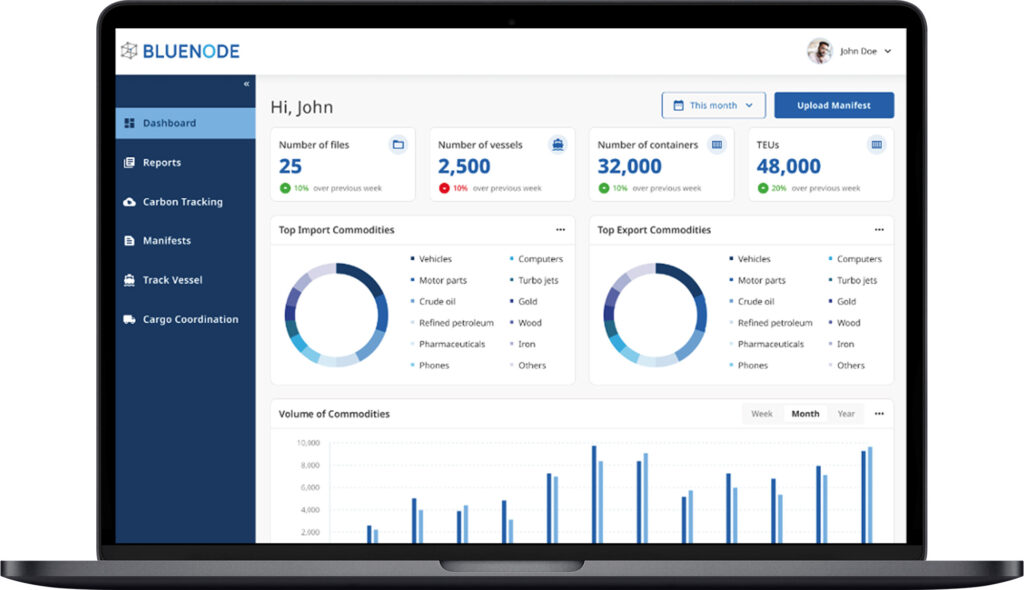When it comes to supply chain shipping, most of today’s carbon emissions measurements are based on simply calculating distance. Anybody can find mileage data for ocean routes to the Port of Los Angeles and then look up a ship’s diesel engine and calculate how much fuel it uses.
But that measurement doesn’t account for wind, waves, and storms.
Merely calculating the distance between two ports means potentially making decisions on data that misses a critical component, because measuring effort is a lot more accurate than just calculating actual distance.
Capturing holistic carbon-neutral shipping data
Whether traveling via water or land, temperature, waves, and weather all have a significant impact on carbon.
We use supply chain data to help track the carbon intensity of moving cargo from the source to the shelf. For example, BlueNode has worked primarily with ports, really focusing on the cargo handling aspect of the supply chain.
We developed a tool to provide a strategic view so that ports can plan for how to mitigate their carbon intensity by factoring where the carbon is coming from in port operations. So, for the Port of Shanghai we identified that the major contributor to carbon intensity is the operation of mobile “straddle carriers” used to move shipping containers. But if you compare that to the port of Los Angeles, trucks in fixed-position gantry cranes are much larger contributors to carbon intensity at that port. This allows a port to make strategic decisions on capital expenditures.
We can also identify the true carbon footprint of shipping products or materials from point A to point B factoring in wind, waves, and storms.

Figure 1: Rail transit emissions based on actual effort are quite different compared to estimated distance or actual distance.

Figure 2: Truck transit emissions for effort compared to both estimated and actual emissions.

Figure 3: Ocean transport changes when transport effort due to weather and tides is compared to estimated or actual distance and weight.
Why carbon-neutral data matters for supply chains
Applications for carbon emissions data are growing. From regulation compliance to internal benchmarking to external reporting, accurate data can inform a large number of operations.
Carbon mitigation
Carbon-neutral data can help you balance shipping time, expense, and environmental impact when designing mitigation strategies with unmatched carbon data spanning ports, terminal operators, maritime and rail carriers, shippers, and trade authorities.
Intermodal sustainability
With accurate data, you can understand the risk and impact of intermodal equipment and network decisions to achieve sustainable cost savings and long-term operational efficiencies.
Corporate sustainability
Carbon-neutral metrics can reveal and help you diagnose anomalies in trade data, including counterfeit, fraud, or dangerous goods violations for regulatory compliance and corporate sustainability.
Carbon-neutral goes beyond shipping
BlueNode is an intermodal supply chain logistics SaaS-based platform, making data something that’s interoperable, usable, and can provide useful outputs for supply chain participants.

Figure 4: Carbon neutral shipping data can be tracked via an integrated and sharable dashboard.
Our capabilities include enhanced vessel performance analytics, port call optimization, end-to-end cargo visibility, and automation of maritime shipping data cleansing. By automating the data cleansing process, we reduce errors and save time.
Learn how Everstream and Blue Node can help you with carbon neutral shipping.
As Vice President of BlueNode, Louis Beaubien guides Everstream Analytics clients in evaluating and monitoring carbon intensity and other emissions-related metrics for reporting, compliance, governance, and other applications.